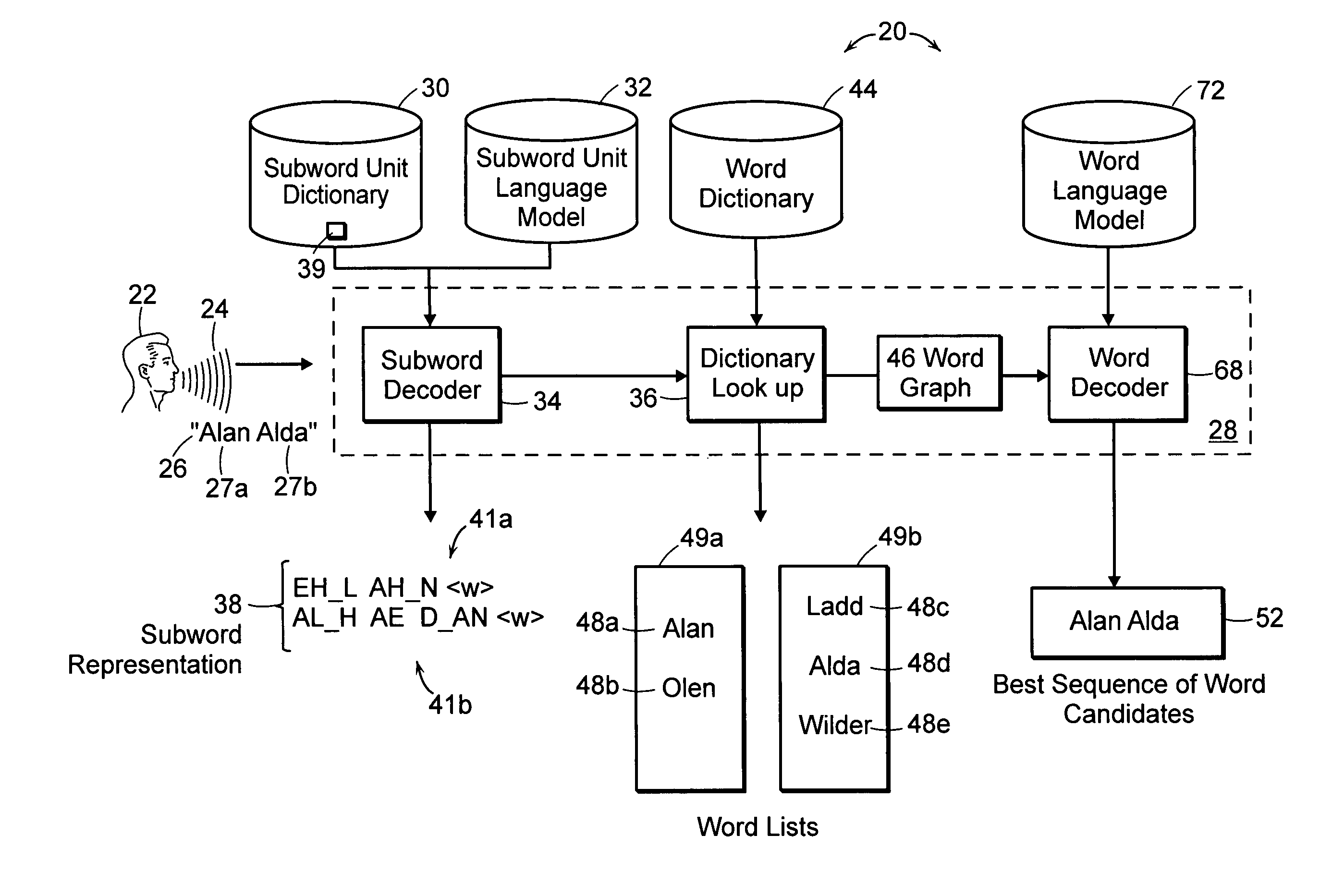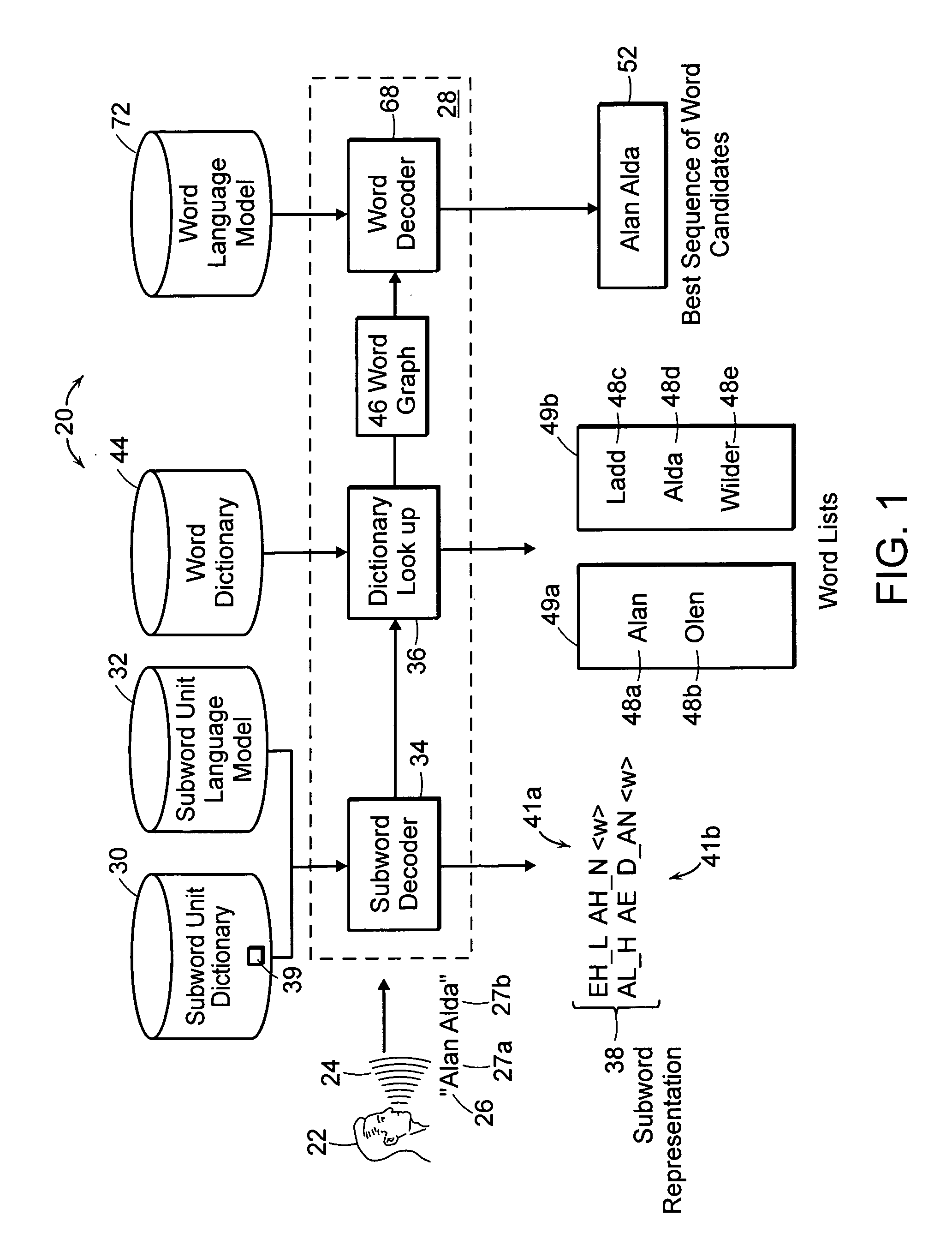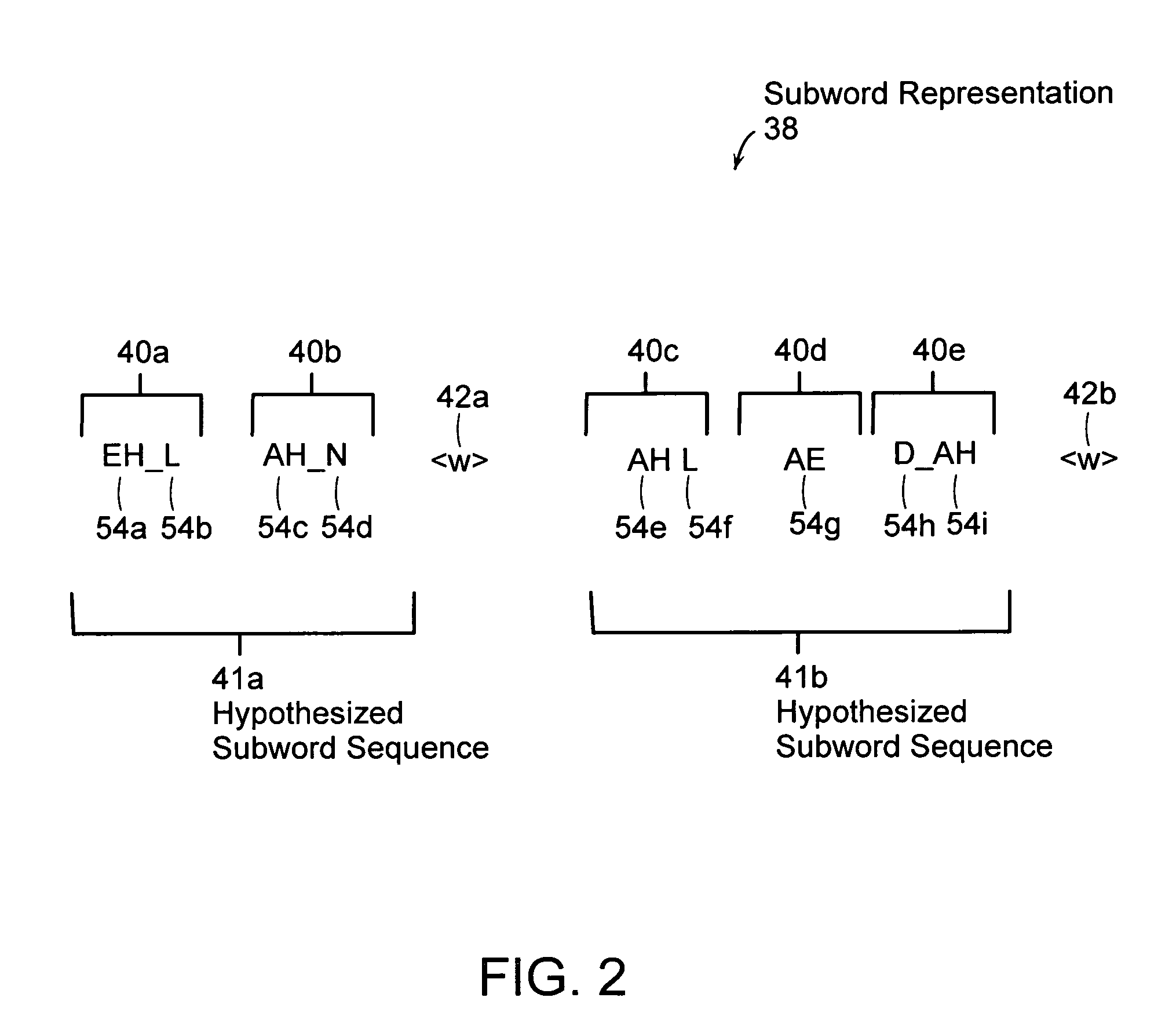Vocabulary independent speech recognition system and method using subword units
a speech recognition system and subword technology, applied in speech analysis, speech recognition, instruments, etc., can solve the problems of slow search compared to word-based retrieval techniques, poor indexing of best hypothesis, and error rate of traditional words, so as to reduce the processing time of large corpora, improve search efficiency, and process vocabularies. the effect of word error ra
- Summary
- Abstract
- Description
- Claims
- Application Information
AI Technical Summary
Benefits of technology
Problems solved by technology
Method used
Image
Examples
Embodiment Construction
[0024]A description of preferred embodiments of the invention follows.
[0025]FIG. 1 is a block diagram of a speech recognition or detection system 20, including a digital processor 28, a subword unit (particle) dictionary 30, subword unit (particle) language model 32, a subword decoder 34, dictionary lookup module 36, word dictionary 44, word graph 46, word decoder 68, and word language model 72, according to a preferred embodiment of the invention. A speaker 22 (user of the system 20) provides a spoken input 24 that is input to the speech recognition or detection system 20, typically, by speaking into a microphone attached to the system 20. Alternatively, the spoken input 24 is based on an audio recording of human speech. The spoken input 24 includes an input sequence 26 of input words 27 (e.g., 27a and 27b) provided by the user 22.
[0026]The speech detection system 20 is a computer system or part of a larger computer system and includes a digital processor 28 (e.g., microprocessor)....
PUM
 Login to View More
Login to View More Abstract
Description
Claims
Application Information
 Login to View More
Login to View More - R&D
- Intellectual Property
- Life Sciences
- Materials
- Tech Scout
- Unparalleled Data Quality
- Higher Quality Content
- 60% Fewer Hallucinations
Browse by: Latest US Patents, China's latest patents, Technical Efficacy Thesaurus, Application Domain, Technology Topic, Popular Technical Reports.
© 2025 PatSnap. All rights reserved.Legal|Privacy policy|Modern Slavery Act Transparency Statement|Sitemap|About US| Contact US: help@patsnap.com



